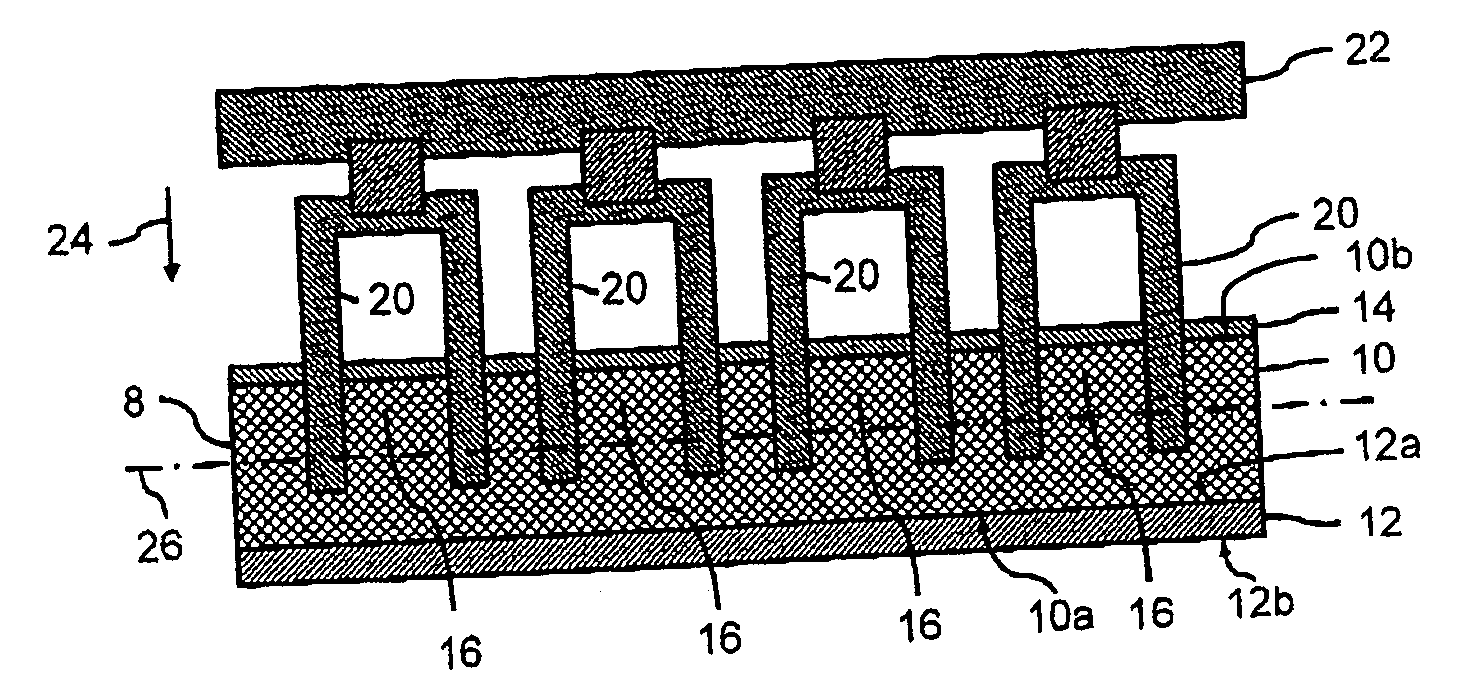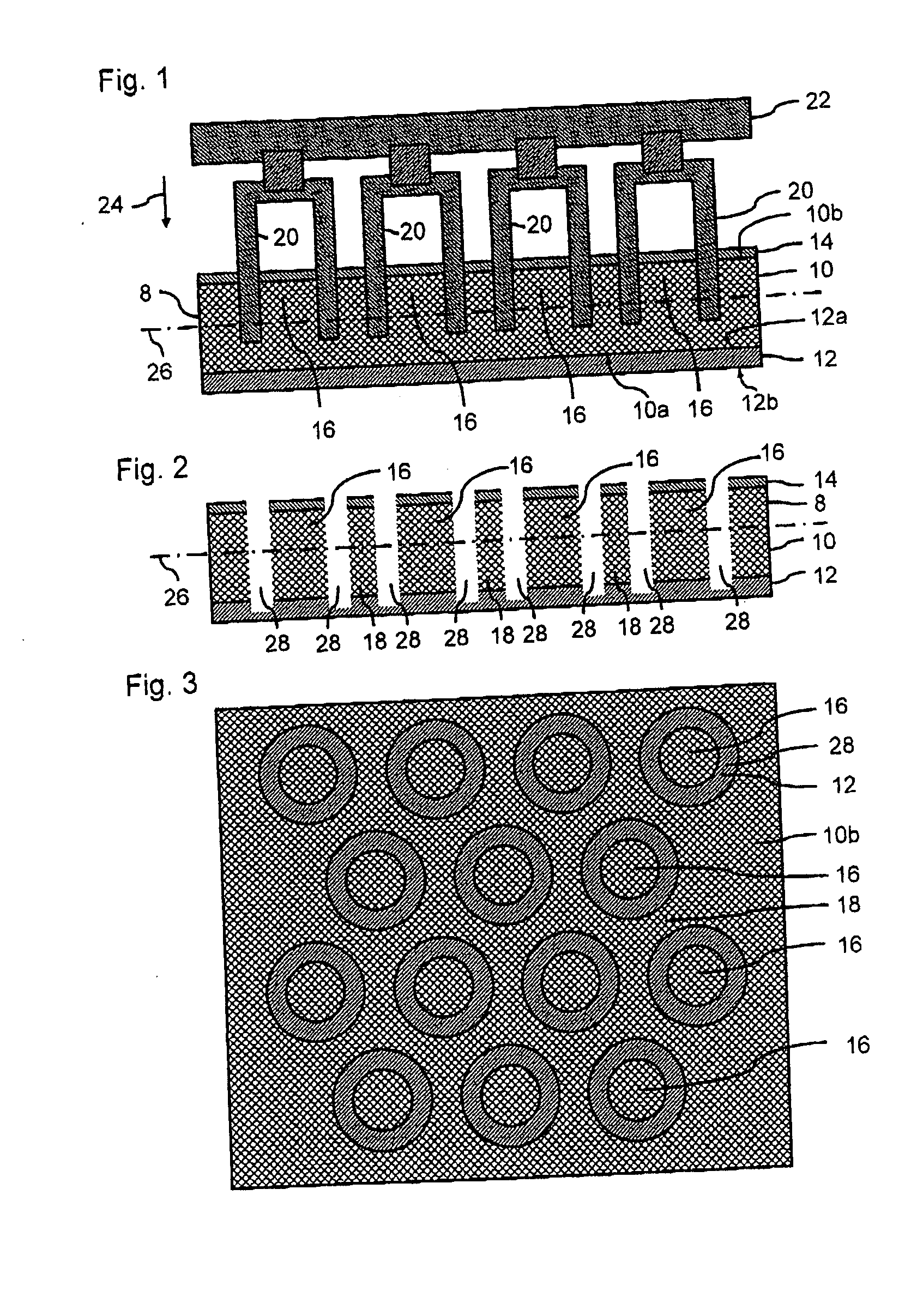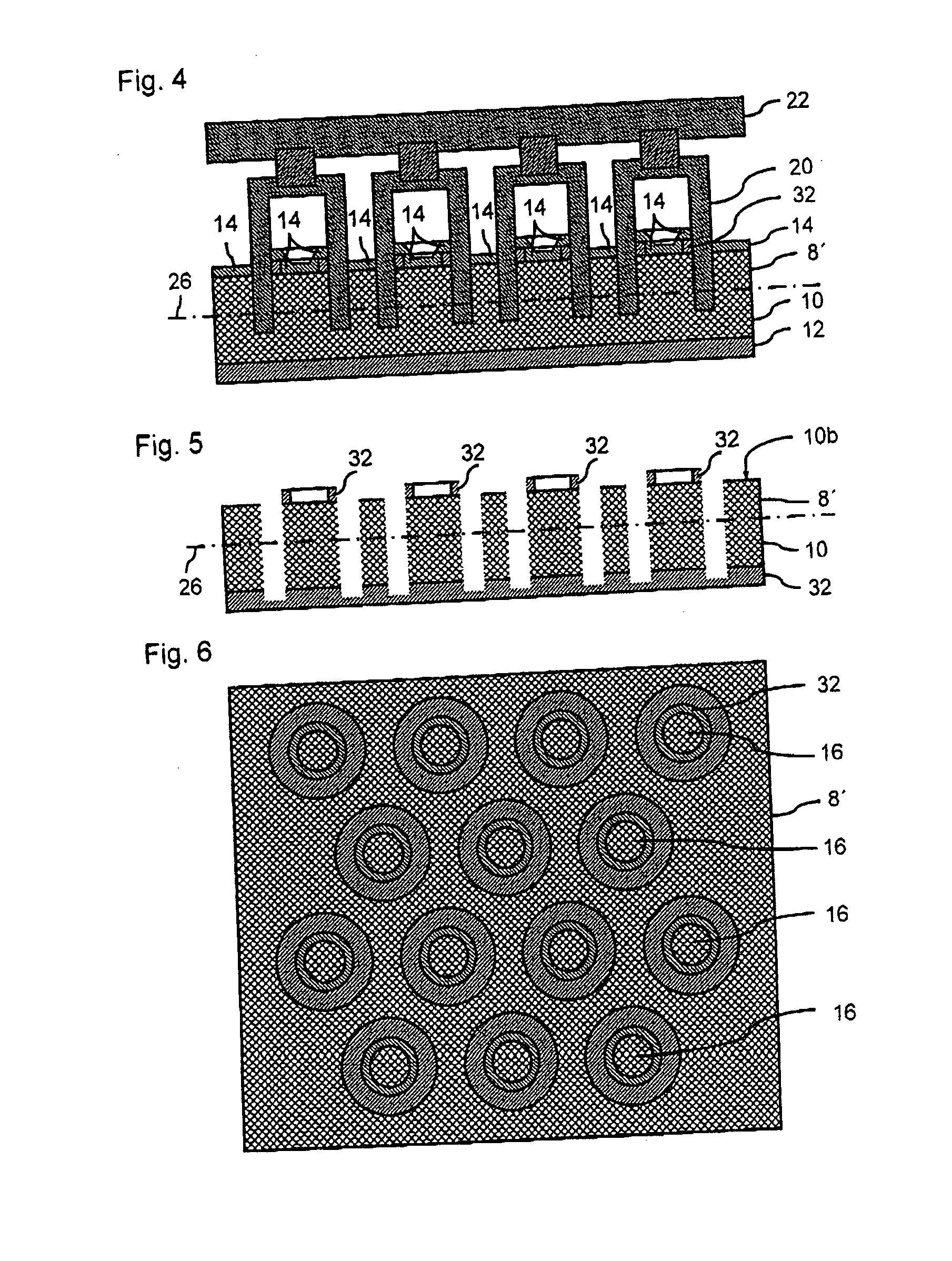Process for producing components
- Summary
- Abstract
- Description
- Claims
- Application Information
AI Technical Summary
Benefits of technology
Problems solved by technology
Method used
Image
Examples
Embodiment Construction
[0057]FIG. 1 shows a composite element 8 comprising a glass substrate 10 with a laminated-on plastic film 12, the lower surface 10a of the glass substrate 10 and the upper surface 12a of the plastic film 12 being releasably surface-joined to one another. A protective resist 14 has been applied to an upper surface 10b of the substrate 10. The composite element 8 can be placed, for example, onto a work table by means of a lower surface 12b of the carrier film 12.
[0058] Four hollow-cylindrical lapping punches 20 arranged next to one another are excited to ultrasonic vibration by a Sonotrode via a common holder 22 and are subjected to the action of force in the direction indicated by the arrow 24. The lapping punches 20, on account of their shape, remove the material of the protective resist 14, of the substrate 10 and of the carrier film 12 in portions, or specifically in the shape of circular rings, in order to punch a multiplicity of components 16 out of the substrate 10. The substr...
PUM
| Property | Measurement | Unit |
|---|---|---|
| Force | aaaaa | aaaaa |
| Surface | aaaaa | aaaaa |
Abstract
Description
Claims
Application Information
 Login to View More
Login to View More - R&D
- Intellectual Property
- Life Sciences
- Materials
- Tech Scout
- Unparalleled Data Quality
- Higher Quality Content
- 60% Fewer Hallucinations
Browse by: Latest US Patents, China's latest patents, Technical Efficacy Thesaurus, Application Domain, Technology Topic, Popular Technical Reports.
© 2025 PatSnap. All rights reserved.Legal|Privacy policy|Modern Slavery Act Transparency Statement|Sitemap|About US| Contact US: help@patsnap.com



